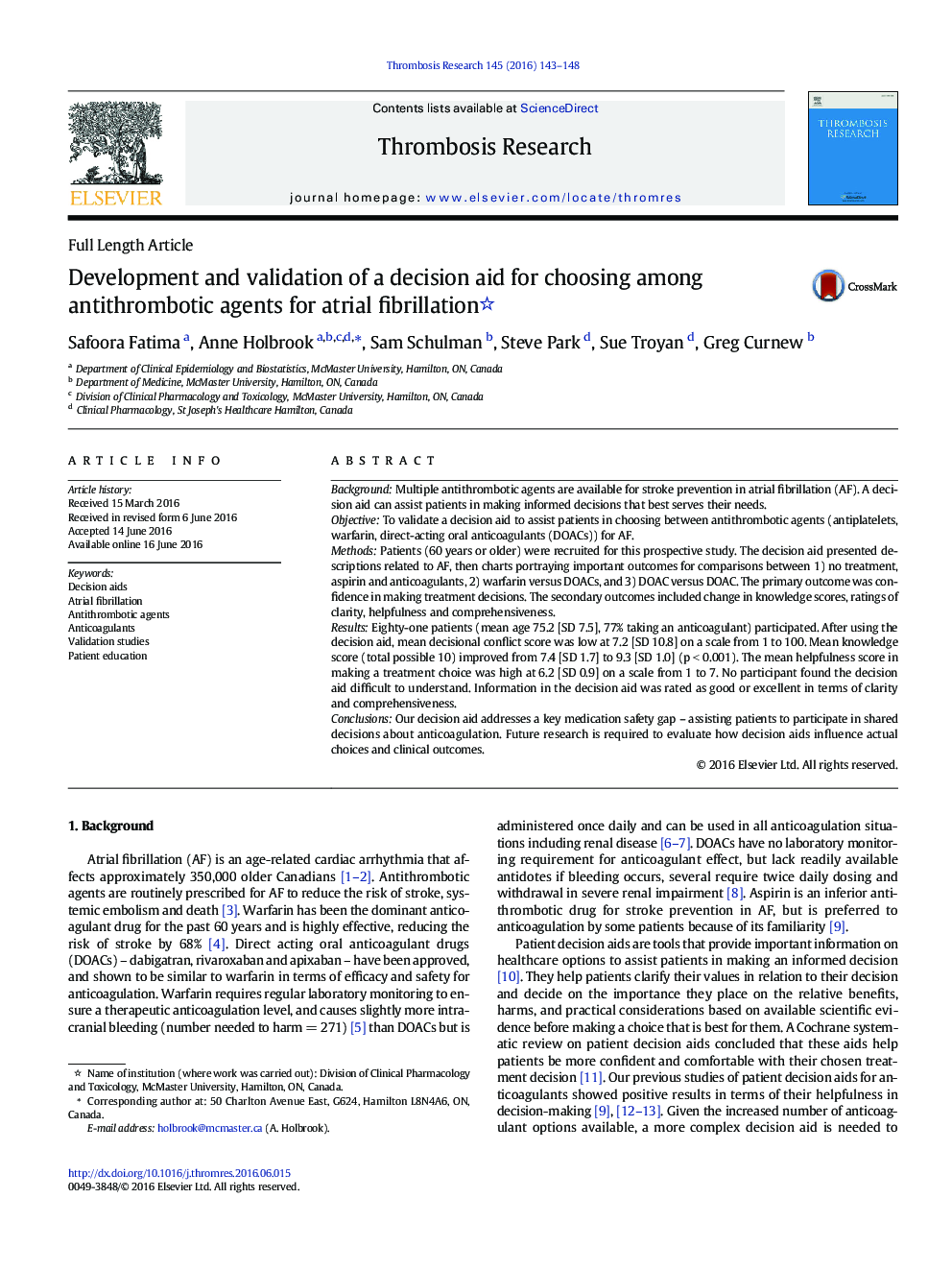| کد مقاله | کد نشریه | سال انتشار | مقاله انگلیسی | نسخه تمام متن |
|---|---|---|---|---|
| 3026880 | 1579198 | 2016 | 6 صفحه PDF | دانلود رایگان |
• Patients with atrial fibrillation have to choose from several antithrombotic agents.
• A decision aid comparing different antithrombotic agents was presented to patients.
• Patients reported low decisional conflict, increased knowledge and high helpfulness ratings.
• Decision aids can help patients make informed antithrombotic treatment decisions.
BackgroundMultiple antithrombotic agents are available for stroke prevention in atrial fibrillation (AF). A decision aid can assist patients in making informed decisions that best serves their needs.ObjectiveTo validate a decision aid to assist patients in choosing between antithrombotic agents (antiplatelets, warfarin, direct-acting oral anticoagulants (DOACs)) for AF.MethodsPatients (60 years or older) were recruited for this prospective study. The decision aid presented descriptions related to AF, then charts portraying important outcomes for comparisons between 1) no treatment, aspirin and anticoagulants, 2) warfarin versus DOACs, and 3) DOAC versus DOAC. The primary outcome was confidence in making treatment decisions. The secondary outcomes included change in knowledge scores, ratings of clarity, helpfulness and comprehensiveness.ResultsEighty-one patients (mean age 75.2 [SD 7.5], 77% taking an anticoagulant) participated. After using the decision aid, mean decisional conflict score was low at 7.2 [SD 10.8] on a scale from 1 to 100. Mean knowledge score (total possible 10) improved from 7.4 [SD 1.7] to 9.3 [SD 1.0] (p < 0.001). The mean helpfulness score in making a treatment choice was high at 6.2 [SD 0.9] on a scale from 1 to 7. No participant found the decision aid difficult to understand. Information in the decision aid was rated as good or excellent in terms of clarity and comprehensiveness.ConclusionsOur decision aid addresses a key medication safety gap – assisting patients to participate in shared decisions about anticoagulation. Future research is required to evaluate how decision aids influence actual choices and clinical outcomes.
Journal: Thrombosis Research - Volume 145, September 2016, Pages 143–148
